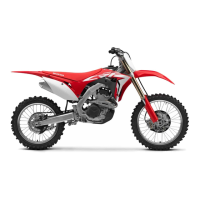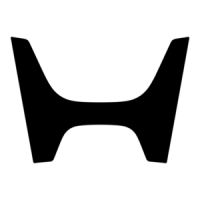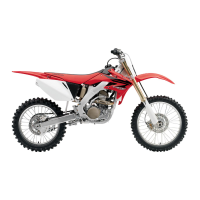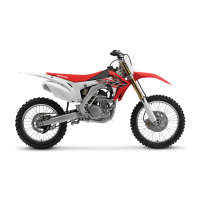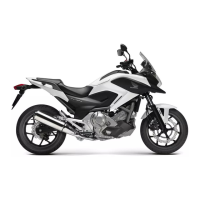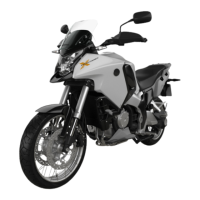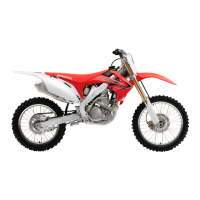
 Loading...
Loading...
Do you have a question about the Honda crf250r 2012 and is the answer not in the manual?
| Engine Type | 249cc liquid-cooled single-cylinder four-stroke |
|---|---|
| Bore x Stroke | 76.8mm x 53.8mm |
| Transmission | Close-ratio five-speed |
| Front Suspension Travel | 12.2 inches |
| Front Brake | Single 240mm disc with twin-piston caliper |
| Rear Brake | Single 240mm disc |
| Front Tire | 80/100-21 |
| Rear Tire | 100/90-19 |
| Seat Height | 37.6 inches |
| Ground Clearance | 13.2 inches |
| Fuel System | PGM-FI |
| Final Drive | Chain |
| Rear Suspension | Pro-Link Showa single shock with spring preload, rebound and compression damping adjustability |
Stresses the necessity of proper maintenance for safety and performance.
Highlights crucial safety precautions for performing maintenance tasks.
Provides a schedule for regular inspection and service of the CRF.
Provides step-by-step instructions for changing engine oil and filter.
Recommends specific transmission oil types and viscosity for the CRF.
Explains how to check and add transmission oil to the CRF.
Guides the process of draining and replacing transmission oil.
Specifies recommended coolant types and mixtures for the CRF.
Details how to check and add coolant to the CRF's cooling system.
Provides instructions for replacing the CRF's coolant.
Guides the cleaning process for the CRF's air cleaner element.
Details how to measure intake and exhaust valve clearances.
Details the steps for removing the cylinder head assembly.
Guides the removal of the piston from the cylinder.
Explains how to remove piston rings from the piston.
Provides instructions for installing the piston into the cylinder.
Guides the installation of the cylinder onto the engine.
Outlines inspection procedures for the front suspension components.
Details inspection steps for the rear shock absorber and swingarm.
Specifies the recommended fork oil type for the CRF.
Guides the process of changing the fork oil.
Explains how to adjust the front brake lever for optimal feel.
Guides the adjustment of the rear brake pedal height.
Details how to inspect front and rear brake fluid levels.
Explains how to inspect brake pads for wear and when to replace them.
Outlines procedures for checking drive chain slack and condition.
Explains how to remove, clean, and replace the drive chain.
Details how to adjust front suspension for rider weight and conditions.
Explains how to adjust rear suspension for rider weight and conditions.
Provides suspension tuning advice based on track surface conditions.
Offers guidelines for adjusting suspension based on symptoms.
Provides a table of torque specifications for various fasteners.
